Exploring Cornstarch as a Natural Ant Control Method
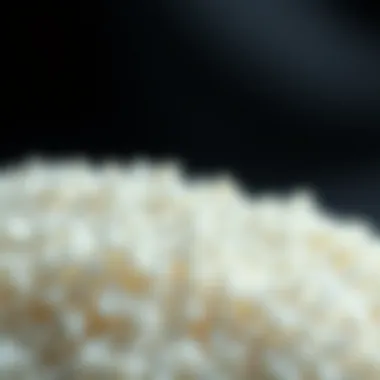
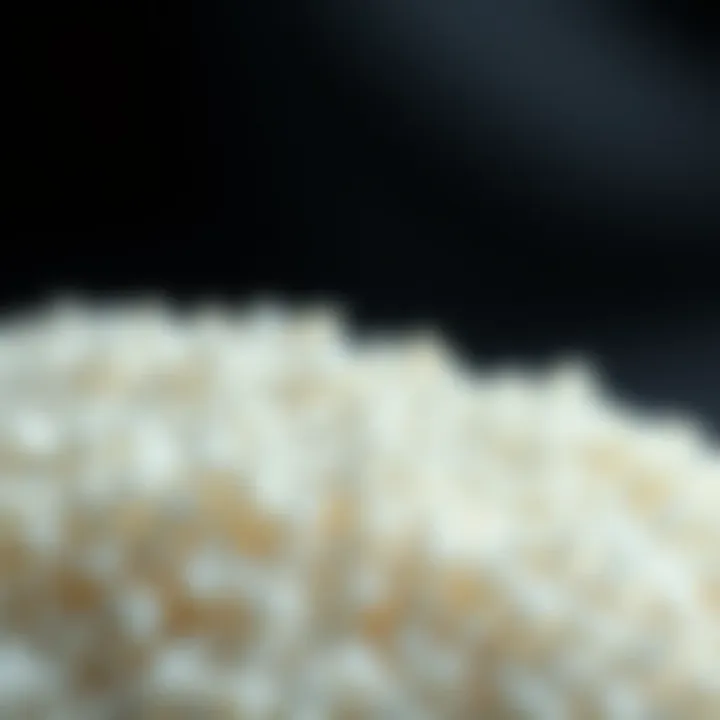
Intro
When it comes to addressing ant infestations, the quest for solutions often leads us down the well-trodden paths of commercial pesticides and traps. However, a surprising contender is gaining traction within natural pest control methods: cornstarch. In this article, we will explore how cornstarch may serve as a viable alternative to synthetic chemicals, examining its effectiveness, application methods, and the potential impacts on the environment. The simpler, the better, many believe. But is cornstarch up to the task?
Animal Species Profile
Prologue to the Animal Species
Ants belong to the insect family Formicidae, and they're often considered social insects due to their complex colony structures. With over 12,000 identified species, ants can be found on every continent except Antarctica. Their adaptability means they've evolved to thrive in various environments, from dense forests to urban settings.
Physical Characteristics and Appearance
Ants vary significantly in size and color. While most are black or brown, some tropical species sport vibrant hues. Generally, ants' bodies are divided into three primary segments: the head, thorax, and abdomen. They also have six legs and elbowed antennae that detect odors and convey information about their surroundings. A prime example is the Pharaoh Ant, known for its small size and pale yellow color, which has become a common household pest.
Natural Habitat and Distribution
Ants are not fussy when it comes to habitats. They can inhabit forests, grasslands, deserts, and even human dwellings. In urban settings, they're often found in gardens, kitchens, and near food sources. The Argentine Ant, for instance, is notorious for invading homes, drawn by leftover crumbs and spilled sugars. Their ability to thrive in various environments is an essential factor in their proliferation.
Behavior and Social Interactions
Ants are master communicators, employing pheromones to transmit messages within their colonies. They exhibit fascinating behaviors, from foraging in teams to defending their nests vigorously against intruders. One could say they know a thing or two about teamwork — scouts find food, workers gather it, and soldiers protect the nest. Each ant has a role, making the colony function like a well-oiled machine.
"While considerable attention is often focused on their size and foraging abilities, it’s the structure of their societies and roles that really underscores their remarkable nature."
Impacts of Cornstarch for Ant Control
In understanding ants better, we can appreciate how cornstarch might interact with their biology. Cornstarch has no harsh chemicals, making it an attractive option for those wanting to tread lightly on the environment. Sprinkling it near ant trails may hinder their movement, and since ants are known to carry substances back to their colonies, the application may disrupt their food supply chain.
In the following sections, we shall delve into how to properly use cornstarch for ant control, its comparative effectiveness with traditional methods, and any environmental implications arising from its usage. As we unpack each aspect, key terms such as nesting behavior, foraging patterns, and chemical sensitivities will connect the dots to the bigger picture. Thus, join me on this journey to discover a natural alternative to conventional pest control that might be lurking in your pantry.
Prolusion to Ant Infestations
Ant infestations can be a significant nuisance, whether they invade your kitchen, garden, or any snug corner of your home. Understanding the dynamics of ant behavior and the different species that commonly invade domestic environments is crucial for effective management. These little creatures are not just pests; they're a testament to the complexity of nature, showcasing social structures and survival strategies that have evolved over millennia.
Ants communicate and rally in ways that might even surprise the casual observer. Their ability to organize as a colony can turn a minor inconvenience into a full-blown infestation if not addressed timely. By recognizing their behavioral patterns, homeowners can better prepare themselves for an effective ant control strategy, making it imperative to delve deeper into this topic.
Moreover, comprehending ant behavior not only aids in pest management but also promotes a holistic approach to residential pest control. When armed with knowledge about the motivations behind ant movement—be it food search, nesting, or a defensive reaction—readers can make educated decisions rather than resort to reactive measures. This rapport with one's environment fosters a sense of responsibility towards pest control, emphasizing sustainability and long-term efficacy.
In essence, tackling ant infestations requires a multi-faceted understanding of these organisms. Knowing which species to expect, their habits, and how best to respond allows for a customized approach that minimizes reliance on harsh chemical solutions. This article aims to equip readers with the tools they need to identify and manage ant populations effectively and responsibly.
Understanding Ant Behavior
The study of ant behavior reveals a fascinating network of interactions that govern their lives. Ants are social insects living in structured colonies, often numbering in the thousands or even millions. Their survival hinges on communication and teamwork, with pheromones playing a notable role in how they convey information.
For example, ants utilize scent trails to lead their comrades to food sources, a behavior that can quickly turn a minor breadcrumb into an army of eager foragers. Every encounter with a member of the colony can trigger a wave of responses, from alarm to recruitment, all based on their sophisticated signaling system. This means that the presence of even a few ants can indicate a much larger network and potential issues down the line.
Common Types of Ants in Domestic Settings
When discussing ant infestations, a few species are particularly notorious for infiltrating homes. Here’s a closer look at some common culprits:
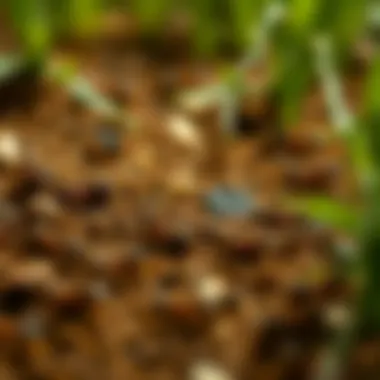
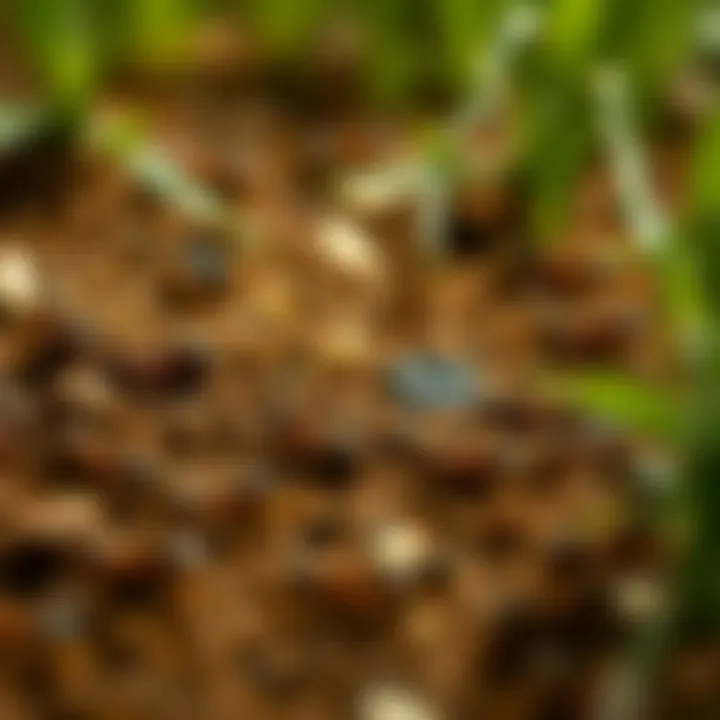
- Carpenter Ants: These are often found in damp wooden structures, and they can pretty much chew through wood to create nesting sites.
- Odorous House Ants: Known for their distinct smell, they can invade kitchens in droves, especially in search of sugary foods.
- Pavement Ants: These ants often build their nests in soil or cracks in pavement, making them frequent visitors in homes that are near sidewalks or driveways.
Knowing which species is causing the infestation can direct your approach to control and management. For instance, carpenter ants may require professional intervention due to their destructive habits, whereas odorous house ants might be deterred through simpler solutions. Identifying the type of ant can prevent excessive measures that could harm the environment or non-target species.
By understanding these elements, homeowners can adopt a strategic mindset to tackle ant problems head-on. Recognizing the importance of understanding ant behavior and species will pave the way for effective control tactics—setting the stage for the subsequent exploration of cornstarch as a natural solution against their infestations.
The Role of Cornstarch in Pest Control
In recent years, there has been a rising interest in natural pest control methods, particularly as concerns about chemical pesticides grow. Cornstarch, a common household item often used in cooking, has emerged as an intriguing contender in the realm of pest management, particularly for dealing with ant infestations. Understanding the role of cornstarch in pest control is pivotal, as it blends both efficacy and safety, aligning well with the preferences of conscientious homeowners.
What is Cornstarch?
Cornstarch is a fine, white powder processed from the endosperm of corn kernels. It’s primarily composed of carbohydrate and is often utilized as a thickening agent in culinary dishes but has also found its way into various realms outside the kitchen. Beyond its culinary uses, this soluble powder has demonstrated potential in pest management.
Cornstarch is non-toxic and presents minimal environmental risks, making it an appealing alternative to synthetic pesticides. Its texture is unique; being dry and powdery, it can easily be distributed in areas where ants are prevalent. Furthermore, its low cost and widespread availability in grocery stores make it accessible for everyday folks looking to rid their homes of ants without resorting to harsh chemicals.
How Cornstarch is Used in Pest Management
When it comes to practical applications of cornstarch for controlling ant populations, it’s about applying it in a manner that creates a barrier or disrupts their typical behavior. Here are some key ways it can be effectively utilized:
- Dusting: Sprinkling cornstarch directly on the ground or surfaces where ant activity is observed can act as a deterrent. The powder gets on their bodies and can hinder their ability to navigate.
- Baiting: Mixing cornstarch with a little sugar can attract ants. Once they consume the mixture, the cornstarch will disrupt their digestive system. This method relies on the ants taking the bait back to their colony, which can lead to a larger reduction in the ant population.
- Sealants: Cornstarch can be used in combination with other natural ingredients to create sealants for small entry points where ants may be entering the home.
"Cornstarch not only works against ants but resonates well with individuals looking for environmentally friendly solutions."
Each of these methods can be tailored to suit the specific environment, whether it’s indoors or outdoors. It’s important to note that while cornstarch can be an effective tool against ants, its success often depends on the situation. A careful approach utilizing cornstarch as part of an integrated pest management strategy—combined with other physical and natural deterrents—could yield more reliable outcomes.
Mechanism of Action Against Ants
Understanding the mechanism of action of cornstarch in ant control is crucial in evaluating its effectiveness. It sheds light on how cornstarch interacts with ants on a physical level, providing insights into why it can be a viable alternative to chemical pesticides. This section is pivotal as it bridges the gap between theoretical knowledge and practical applications, demonstrating how a commonly found kitchen staple can influence pest populations.
Physical Properties of Cornstarch
Cornstarch is primarily composed of amylose and amylopectin, two types of starch molecules that play a significant role in its overall functionality. In ant control, its fine, powdery texture is particularly significant. When sprinkled in areas of ant activity, cornstarch acts like a barrier, interfering with the ants’ ability to move efficiently. It can clump with moisture, leading to a sticky situation for the ants.
Moreover, cornstarch's desiccant properties cannot be overlooked. While it does not absorb moisture from the air like some other substances, it can still draw moisture from the ants themselves, creating an environment that’s hostile to their survival. The powder coats their exoskeleton, blocking their spiracles, which are vital for respiration, resulting in suffocation. Essentially, cornstarch capitalizes on the ants’ biological structure and lifestyle, effectively undermining their ability to function normally.
Effects on Ant Physiology
When it comes to the physiological impact of cornstarch on ants, it's like fighting fire with fire, albeit in a more subtle manner. As previously mentioned, the physical clogging effect hinders their respiratory system, but there's more to it than just suffocation. The process of ingesting cornstarch can also disrupt their digestive systems. Ants are not bio-mechanically equipped to process starches in keeping with their usual diet of protein or sugar. As they consume the cornstarch, it can lead to a form of internal blockage or malnutrition over time, effectively weakening their colonies.
Furthermore, cornstarch lacks any antimicrobial properties, so when engaged in a struggle against mold or bacteria, providing them with an environment that encourages decay or disease can rapidly destabilize their communities. A breakdown in their social structure, which is vital for colony survival, can occur when cornstarch is prevalent. This physiological disruption, paired with their basic instinct of survival, could push the ants to abandon nesting sites that have become uninhabitable.
In sum, understanding the physical and physiological effects of cornstarch on ants emphasizes its value as a practical, natural pest control solution.
In summary, cornstarch acts as a multifaceted strategy against ants. Its ability to physically interfere with movement and respiration coupled with its long-term effects on their health and colony structure solidifies its role as a significant contender against ant invasions in and around household settings. Its efficacy is illustrative of tactical pest management that aligns well with environmentally conscious practices.
Comparative Analysis with Traditional Ant Control Methods
Examining how cornstarch compares to conventional pest control methods is critical for several reasons. First off, ant infestations can be a real nuisance, and understanding the various options for handling them is vital for homeowners. Cornstarch reflects a growing trend towards natural and environmentally friendly pest control methods. As concerns over chemical pesticides rise, evaluating alternatives like cornstarch becomes even more pertinent.
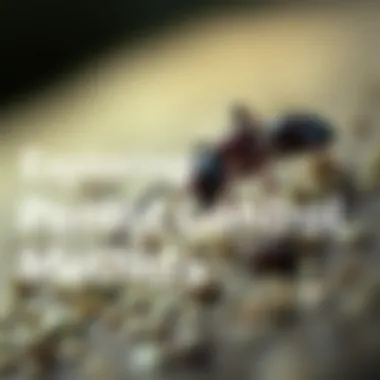
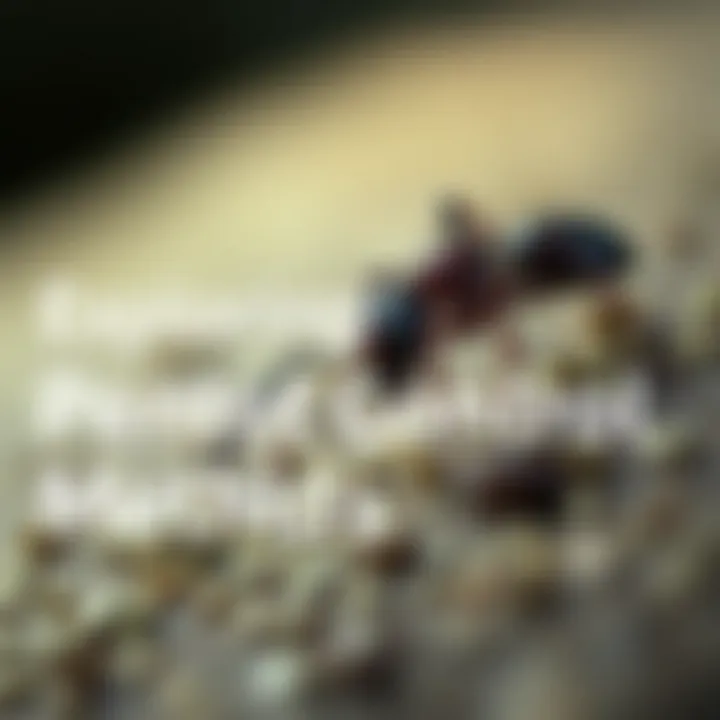
Chemical Pesticides vs. Natural Substitutes
When discussing pest management, chemical pesticides are often viewed as the silver bullet. However, these substances come with their own set of challenges. They can be harmful not just to pests, but to non-target species, including pets and beneficial insects. The persistence of chemicals in the environment raises significant concerns—substances like bifenthrin, commonly used to kill ants, can contaminate soil and water sources, threatening sensitive ecosystems.
Conversely, cornstarch represents a much gentler approach. In fact, it operates without the aggressive toxicity characteristic of many pesticides. Cornstarch works primarily by causing desiccation in ants, effectively dehydrating them by blocking moisture absorption. Because it is a natural product, this method is deemed safer for family and pets alike.
"Going natural might not just be safer; it may also introduce strategies that ants don’t readily adapt to, making it an intriguing alternative."
Moreover, there's a unique edge seen in employing cornstarch as a natural substitute—its availability and straightforward application. It’s typically found in most kitchens and requires no specialized knowledge or equipment to use effectively. Unlike chemical solutions that might necessitate protective gear, cornstarch can be utilized with basic home supplies.
Cost Effectiveness of Cornstarch
Addressing the economic angle, cornstarch stands as an incredibly affordable option. A standard box of cornstarch costs far less than many commercial pest control products. When looking at bulk purchasing, one can obtain cornstarch in significant quantities at a fraction of the price of synthetic pesticides. This raises an interesting point for pet owners and households — cornstarch allows them to effectively manage ant populations without breaking the bank.
From a long-term perspective, the investment in cornstarch could lead to fewer costs associated with repeated pesticide applications. Traditional methods might require multiple treatments or ongoing professional pest control services, which can add up. With cornstarch, however, it can be a single purchase that delivers numerous applications.
Practical Application of Cornstarch Against Ants
Using cornstarch as a method for managing ant populations is an intriguing approach that often piques the interest of homeowners and pest control enthusiasts alike. The notion of employing a common kitchen staple is not only appealing for its simplicity but also its potential effectiveness in tackling pesky ant infestations. This section will delve into the various ways in which cornstarch can be applied to combat these unwelcome visitors, while also discussing its broader implications and considerations in pest management.
Methods of Application
When it comes to putting cornstarch to work against ants, the versatility of this ingredient is remarkable. Here are some common methods that can be employed:
- Barrier Method: Sprinkling cornstarch at high-traffic points such as doorways or windowsills creates a barrier that ants must cross. This can disorient them and discourage entry.
- Bait Stations: Mixing cornstarch with a sugary substance can produce a bait that attracts ants. When they consume this mixture, the cornstarch interferes with their ability to process food, ultimately leading to their demise.
- Dusting Surfaces: Dusting cornstarch in areas known for ant activity can deter them. The fine particles disrupt their trails and confuse their navigation.
It's vital to note that while these methods can be effective, they require regular reapplication. Depending on the environment and ant activity levels, the cornstarch may wash away or be disturbed, necessitating a strategic approach to placement and consistency.
Effectiveness in Different Environments
The effectiveness of cornstarch in controlling ant populations can vary significantly depending on the environment in which it is deployed. Here are some considerations:
- Indoor Settings: In homes, especially in kitchens or dining areas, cornstarch can be quite effective. Ants are often foraging for food, and the trap or barrier methods mentioned can target them effectively.
- Outdoor Areas: In gardens or patios, cornstarch may struggle against more established colonies. Heavy rain or moisture can dilute its effectiveness, causing it to lose its disruptive qualities quickly. Indoor application typically yields better results compared to outdoor use.
- Humidity and Moisture: In humid conditions, cornstarch might clump together, making it less effective as a barrier. In such cases, combining it with other natural deterrents like diatomaceous earth can enhance its efficacy.
In summary, the practical application of cornstarch in ant control encompasses various strategies, each adaptable to specific environments. While its effectiveness can vary, understanding the nuances of application can maximize its potential, offering a natural alternative to conventional pesticides.
"Using cornstarch as an ant deterrent showcases the blend of nature and everyday life, fostering a deeper connection with our surroundings."
For anyone intrigued by the natural methods of pest control, diving deeper into the biology of ants and their habitats could provide further insight into how cornstarch can be utilized most effectively.
For further reading, consider resources like Britannica or insights shared in communities on Reddit.
While cornstarch presents a viable option for ant management, continued research and practice in diverse settings will shape the most effective strategies over time.
Limitations of Using Cornstarch
While cornstarch presents a novel approach to controlling ant populations, it's essential to recognize its limitations. No pest control method is foolproof, and understanding the boundaries of cornstarch's efficacy is crucial for any property owner or enthusiast looking to tackle ant infestations effectively.
Situational Inefficacy
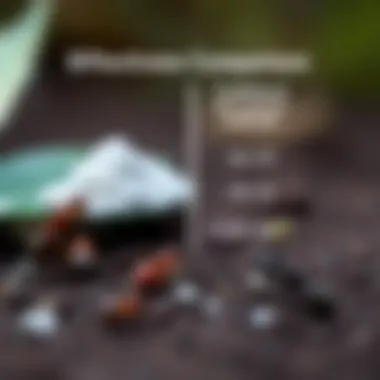
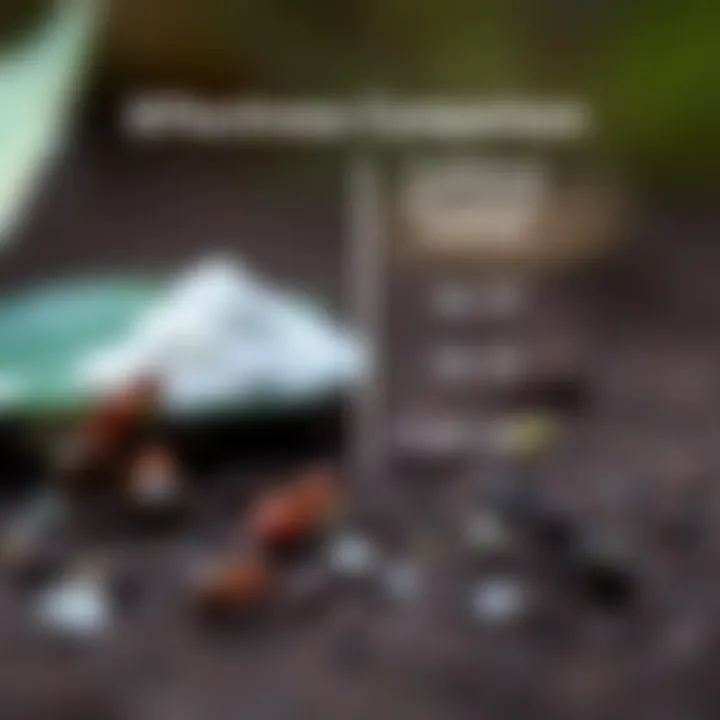
Cornstarch may shine in certain conditions but falters in others. Its effectiveness depends heavily on the specific type of ant being targeted. For instance, carpenter ants or species nesting within wood structures might not be swayed by cornstarch alone. In areas where ants are firmly entrenched, like within a wall or behind heavy appliances, cornstarch may struggle to reach them adequately.
Furthermore, the dosage and method of application are vital. Sprinkling cornstarch in the open may only provide a temporary hindrance without a comprehensive treatment plan. In high-humidity environments, such as kitchens or bathrooms, cornstarch can clump together, reducing its effectiveness significantly. An ant inhabiting a humid area may bypass the cornstarch completely if it has formed bulky masses.
"Proper use of cornstarch is paramount. Even the best solutions need to be applied correctly to make a real impact."
Potential Resistance Development
Another inherent risk with using any natural pest control agent, including cornstarch, revolves around the development of resistance. In the natural world, insects continuously adapt to their environments. The more frequently cornstarch is deployed, the greater the chance some ant colonies might develop a tolerance or even an outright resistance to it. This evolution can hinder the effectiveness of cornstarch in the long run.
Ants have remarkable survival instincts and their colonies can adapt quickly. If cornstarch becomes a common fixture in pest control strategies, one might see ants evolving behaviors that allow them to navigate around it or ignore its presence altogether.
Ultimately, while cornstarch offers a natural remedy for ant control, it presents limitations that must be understood and addressed. Users should combine it with other techniques to ensure long-lasting results against various ant species.
Environmental Considerations
Understanding environmental considerations when utilizing cornstarch for ant control is crucial. The increasing need for effective pest management has led to more natural approaches that harmonize with our ecosystems. Using cornstarch as a pest deterrent offers various benefits, primarily because it minimizes unintended harm to the surroundings.
Impact on Non-target Species
When we think about pest management strategies, we often zero in on the intended target – in this case, ants. However, it’s essential to take into account the broader ecosystem. Cornstarch is less toxic than conventional pesticides. This means beneficial insects, such as bees and ladybugs, face a much lower risk of exposure when cornstarch is used.
Some practical examples include:
- Aphids: These pesky bugs can do a number on plants, and insecticides often lead to collateral damage on beneficial species. Cornstarch, on the other hand, disrupts the life cycle of ants without wiping out the insects that are friendlier to your garden.
- Predatory Beetles: These little guys often feast on pests that harm gardens; using cornstarch may keep their populations safe while still controlling the unwanted ant visitors.
However, no method is foolproof. One must also be mindful of the specific ecosystems where cornstarch is introduced. Too much can create a mess rather than a remedy. So, it’s about balance and knowing when to deploy it.
Biodegradability of Cornstarch
One of the standout features of cornstarch is its biodegradability. Made from corn—the same corn that feeds livestock and some of us humans—cornstarch breaks down naturally with time. This distinct characteristic sets it apart from chemical pesticides that often linger in the environment long after application.
Consider these points about cornstarch’s decomposition:
- Timeframe: Cornstarch typically breaks down within a few weeks to a few months, depending on environmental conditions. So, there's less worry about it accumulating in the soil or waterways.
- Nutrient Source: As it decomposes, it can even add valuable nutrients to the soil, unlike harsh chemicals that may rob the ground of its vitality.
- Implication for Wildlife: Because cornstarch poses little to no risk to wildlife during its breakdown, using it aligns with eco-friendly practices many of us aim to implement in our lives.
The durability of cornstarch is a shining example of how effective pest control can marry with environmental sensitivity.
In summary, when opting for pest control methods, it’s imperative to consider their impact on the larger picture. Cornstarch stands out as a viable candidate, promoting not just the reduction of ant populations but also fostering healthier environments in our homes and backyards.
End
In reflecting on the various dimensions of using cornstarch for ant control, it's clear that this method offers not just an alternative but a complementary approach in pest management strategies. The importance of this discussion lies in its capacity to challenge conventional methods that heavily rely on chemical pesticides. This shift towards more natural solutions is not only a step towards healthier living spaces but also contributes to a broader understanding of pest control's ecological footprint.
Summary of Findings
The investigation into cornstarch's efficacy has illuminated several key points:
- Natural Solution: Cornstarch emerges as a viable alternative to traditional chemical pesticides. It presents a lower risk to both human and animal populations, making it a preferable option for households with pets or small children.
- Mechanism of Action: The way cornstarch physically interacts with ants—primarily through obstruction of their digestive system—shows its potential as a unique approach. This can disrupt their feeding habits without direct toxicity.
- Limitations and Considerations: Despite its benefits, cornstarch is not without its drawbacks. For instance, it may not be effective against all ant species. Additionally, environmental conditions can play a significant role in its performance, meaning it requires tailored application strategies.
Future Directions in Pest Control Research
Looking ahead, further research is essential to fully capitalize on the advantages of cornstarch. Some prospective areas for investigation include:
- Investigating Resistance Patterns: Understanding how different ant populations respond to cornstarch can provide insights into long-term effectiveness and potential resistance development. By studying these patterns, effective counter-measures can be developed.
- Combination Strategies: Exploring the synergistic effects of combining cornstarch with other natural repellents could enhance its effectiveness. For example, blending cornstarch with essential oils known to repel ants might yield promising results and broaden its scope as a pest control solution.
- Public Awareness: As scientific studies support the benefits of cornstarch, initiatives aimed at educating homeowners and pest management professionals about this method will be crucial. Advocacy for natural pest control revolves around disseminating knowledge and changing perceptions within the community.
In summary, cornstarch's role in ant management is a burgeoning field. It has the potential to reshape pest control adequately. As both researchers and practitioners explore its possibilities, we are set on a path toward a more eco-friendly approach to living alongside the natural world.







